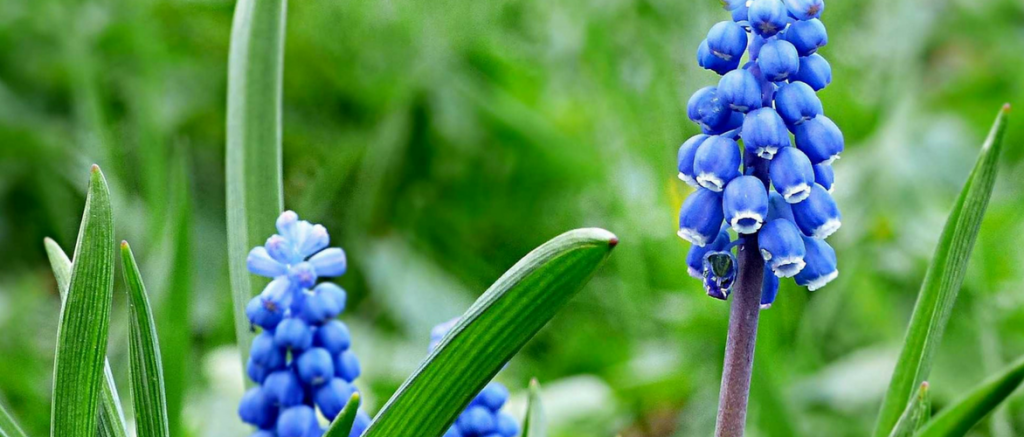
Muscari: How to Plant Successfully
Where, when and how to plant
Contents
A herald of spring, the intense blue or white flower clusters of Muscari or Muscari armeniacum are essential in every garden. Planting them successfully is very simple and, although Muscari prefer sunny spots, they will also flower in partial shade. Highly adaptable, these pretty little hardy flower bulbs thrive everywhere and multiply quickly in all reasonably fertile, moist and well-drained soils, requiring no maintenance. Discover how to create spectacular flowering tapetums by opting for mass planting or how to grow them successfully in pots.
Where to plant the Armenian Grape Hyacinth? (Note: "Muscari d'Arménie" is commonly known as "Armenian Grape Hyacinth" in English. The translation maintains the horticultural term while being culturally appropriate for British gardeners.)
Most Muscari varieties are perfectly hardy, withstanding low temperatures (down to -25°C) in all regions without fail. Within just a few seasons, they’ll form magnificent flowering tapeta without ever becoming invasive. Only the Muscari macrocarpum requires summer heat to flower well, and being the least hardy (-7°C), it’s better suited to southern France.
Muscari are undemanding regarding exposure and soil type. They thrive equally well in full sun or partial shade. These spring bulbs require ordinary, fairly fertile soil that’s fresh but most importantly well-drained. They dislike waterlogged conditions and heavy, compact soils which promote bulb rot. Some varieties have specific needs – for instance, Muscari armeniacum tolerates dry summer soils while Muscari botryoides performs better in clay soils.
Muscari fit everywhere and complement all garden settings – in woodland areas, at the base of trees, along pathways, in rockeries, scattered through meadows or short grass meadows. All muscari varieties adapt well to container cultivation in pots or planters.
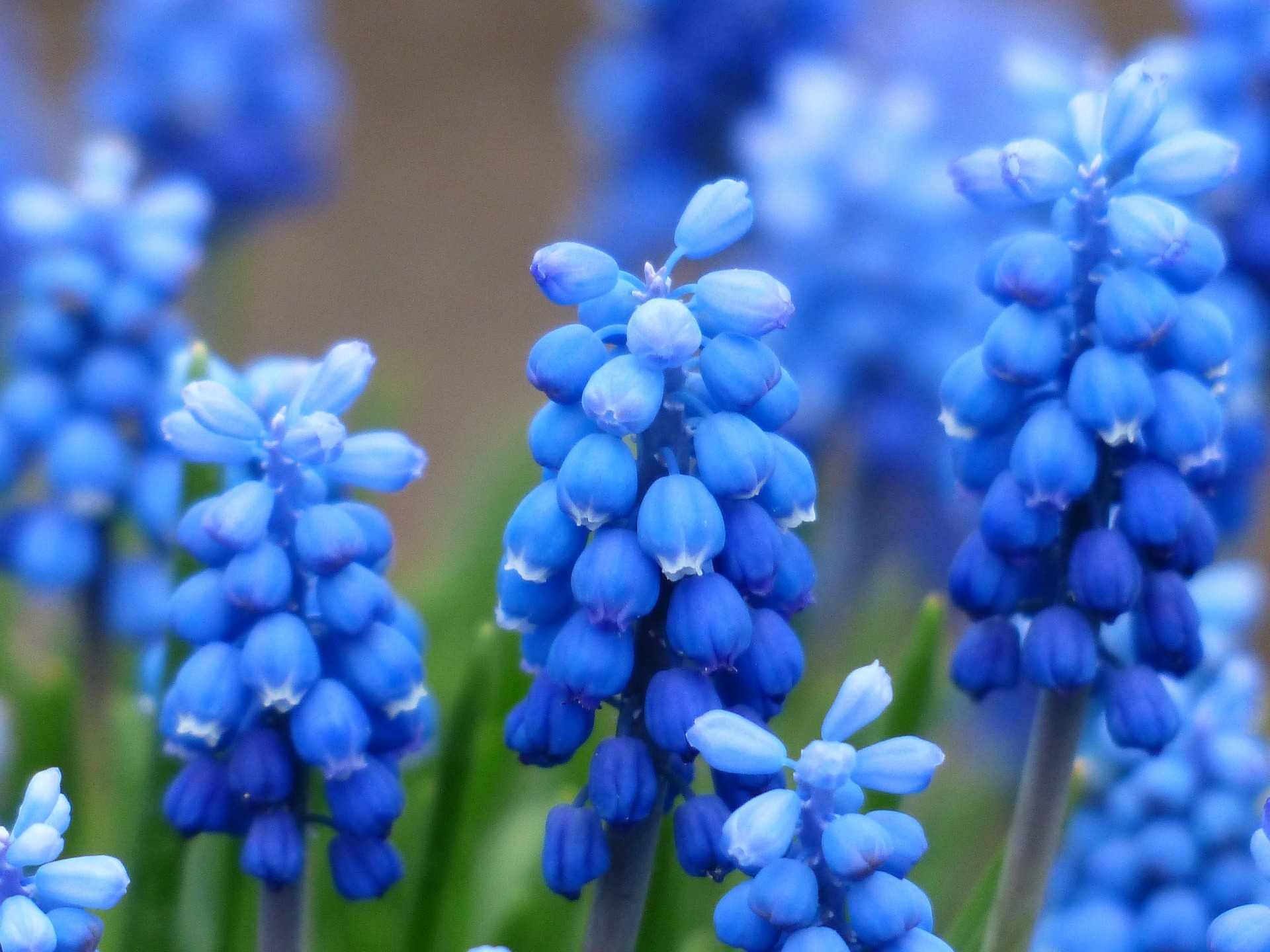
Muscari grow everywhere, in both sun and partial shade
Read also
Muscari: 8 Beautiful Pairing IdeasWhen to plant Muscari?
The small bulbs of Muscari are typically planted from early autumn like most spring-flowering bulbs.
Plant them early in autumn, from September onwards until mid-November, both in open ground and in pots. Once planted, these bulbs require a cold period to flower abundantly in spring.
Discover other Muscari
View all →Available in 1 sizes
Available in 1 sizes
Available in 1 sizes
Available in 1 sizes
Available in 1 sizes
Available in 1 sizes
Available in 1 sizes
Available in 1 sizes
Available in 1 sizes
Available in 1 sizes
How to plant Muscari?
1) For a natural planting, plant in small groups!
In a natural border or in an already planted border, the Muscari bulbs should be planted in clusters between existing clumps of plants.
Using a bulb planter, plant the small bulbs in groups of 3, 5 or more, spacing the groups about 10 to 15 cm apart. Plant at a maximum depth of 8 cm in an irregular pattern for a beautiful, natural decorative effect.
2) For spectacular flowering, plant en masse for a floral carpet effect!
Inexpensive, Muscari are perfect for planting in large numbers. They are ideal for creating magnificent flowering spots around the house, in borders, at the foot of trees or in semi-wild areas. An economical and simple solution is to plant them as a floral carpet. For a harmonious effect, we recommend avoiding overly geometric shapes. Instead, create irregular lines, rounded contours, ovoid forms…
For successful mass planting, allow for about 100 bulbs per m². Planting is very simple: strip the soil. Excavate part of the chosen border area to a depth of 12 to 15 cm, then place the bulbs spaced about 5 to 8 cm apart. Backfill “en masse”. For planting in a short grass meadow, cut out sections of turf and reposition them after placing the bulbs.
Monochromatic or bicolour carpet? Pay attention to aesthetics!
Muscari mix very well together. For a bicolour composition, white/blue, in a basket, first ensure a homogeneous mixture of the different varieties of Muscari bulbs. For a natural arrangement, scatter them by the handful. For a subtle gradation, ensure a harmonious transition by planting a few bulbs of the opposite colour in the middle of the design to create a delicate gradient.
3) The right techniques for planting
- In open ground
- Loosen the soil deeply
- Improve drainage if your soil is too clayey by adding gravel or pumice mixed into the soil or placed as a layer beneath the bulbs
- Plant at a maximum depth of 8 cm, with the bulb tip facing upwards, using a bulb planter
- Space bulbs 5 to 8 cm apart or plant in clusters, ensuring they do not touch
- Cover the bulbs with twice their height in soil
- Firm down
- Water moderately
- Amend with organic fertiliser once a year in autumn to ensure abundant flowering the following spring
- After 2 years, divide the clumps and replant the bulblets from the original bulbs (this will extend the covered area and promote flower vigour)
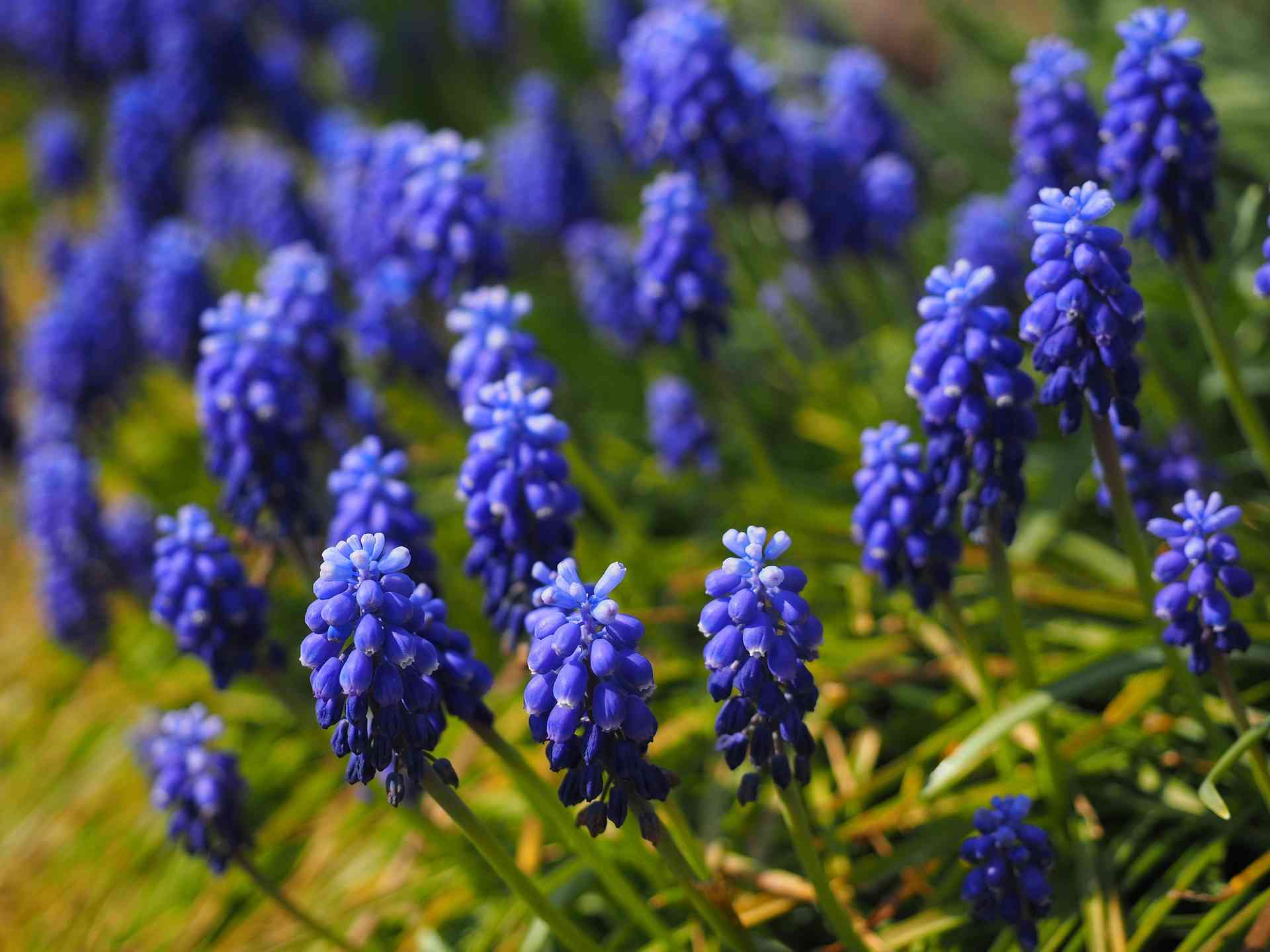
- In pots
Like hyacinths, Muscari bulbs can easily be forced in cold conditions from autumn onwards to enjoy their flowering and fragrance indoors. For outdoor planting on a terrace or balcony, choose a sunny spot and larger bulbs for bigger flowers. You can also plant them in pots in the year of purchase before transferring them to open ground.
- Do not plant them alone; pair them with larger bulbs
- Place miniature Muscari bulbs at the very front with crocuses, miniature cyclamen, pansies or lily of the valley, and taller botanical tulips, hyacinths or Iris reticulata
- Spread a layer of clay pebbles at the bottom of a terracotta pot for perfect drainage
- Fill the pot with a mixture of garden soil, compost and pumice
- Plant densely (about ten bulbs per pot) and cover with twice their height in soil
- Water regularly in winter and autumn, then reduce watering in summer and stop completely during the dormancy period
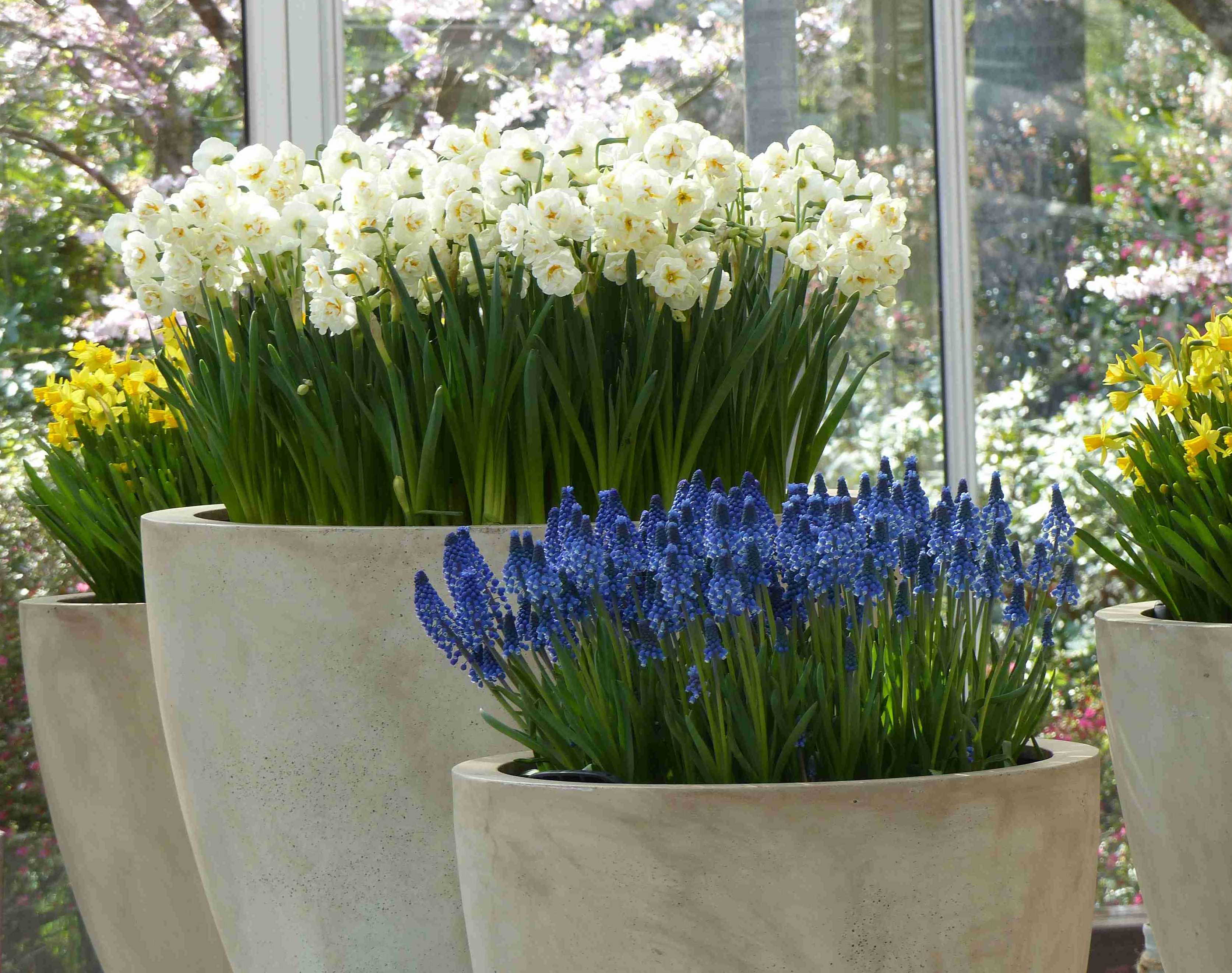
Keep Muscari indoors to enjoy their flowering and fragrance
Good to know
A resting period is essential after flowering for the bulbs to replenish. Do not prune the faded foliage but allow it to yellow and dry before cutting it back.
This slightly untidy appearance can easily be concealed in borders by planting Muscari among Erythronium, wood Anemones, Pulmonaria or Euphorbia.
- Subscribe!
- Contents


































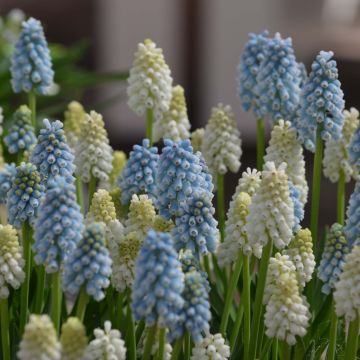
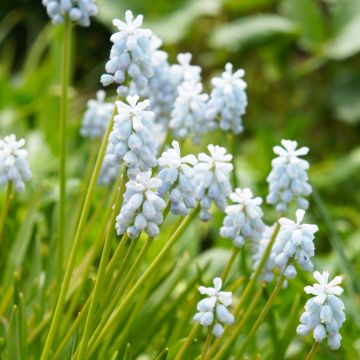
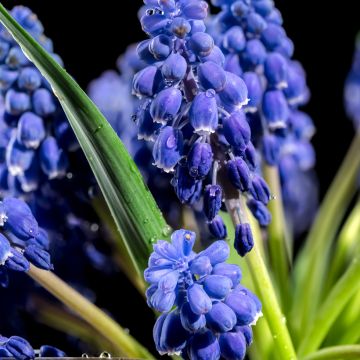
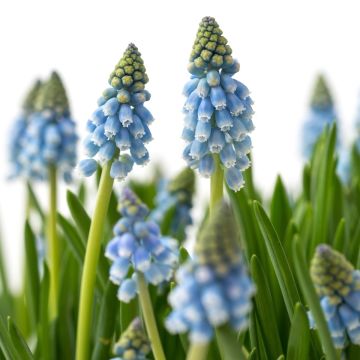
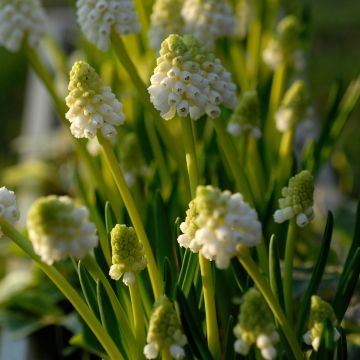
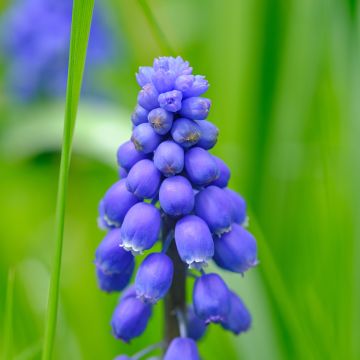
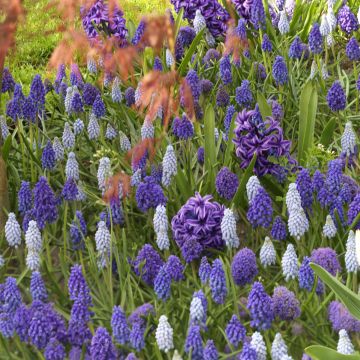
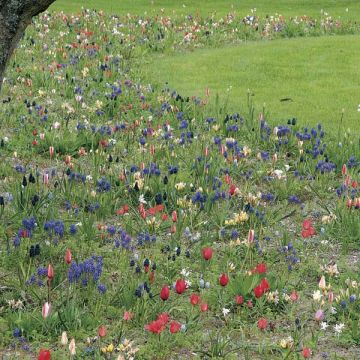
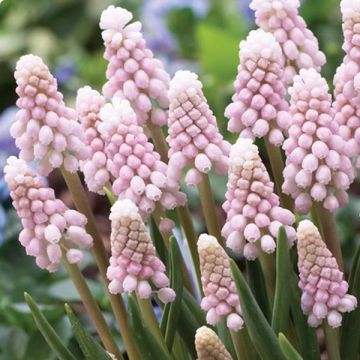

Comments